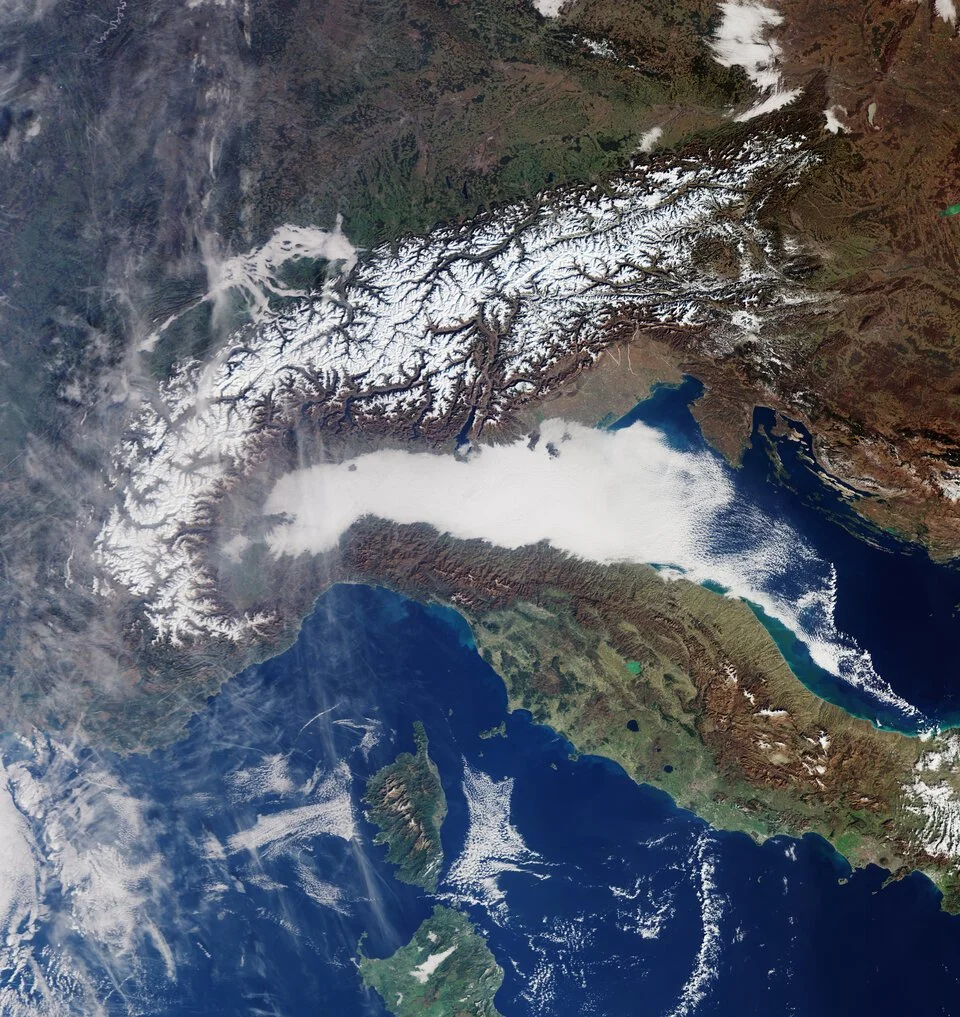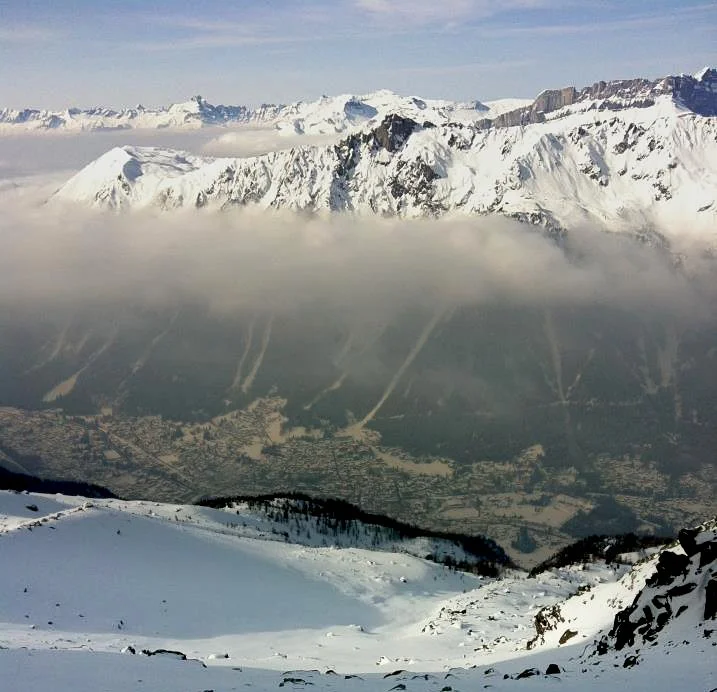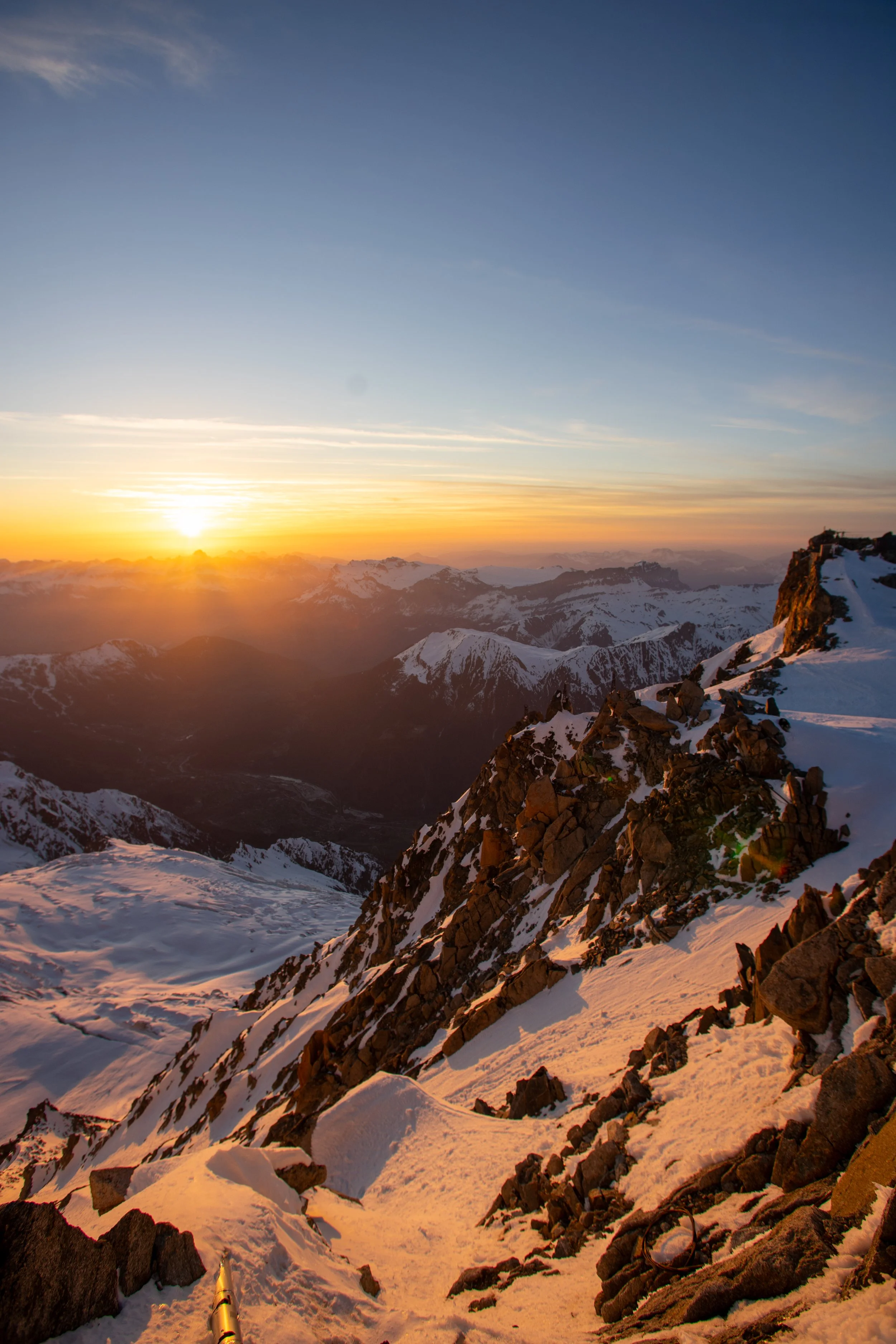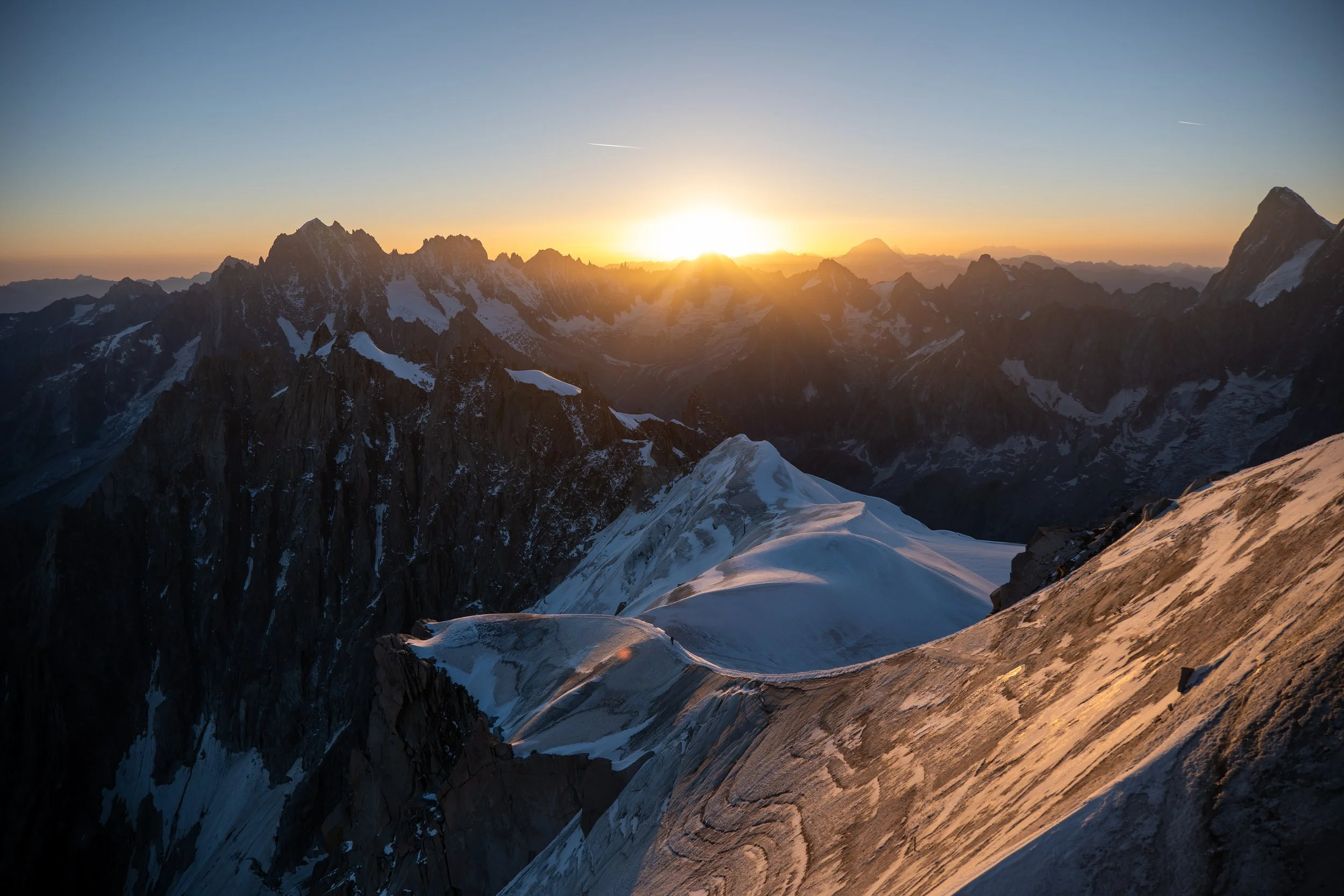This Air of Ours
Overview
Mountain air has always been a symbol of freedom and purity. But in the Chamonix Valley, one of the most famous mountain regions in the world, that air tells a different story. Despite its pristine reputation, Chamonix now records some of the highest winter air pollution levels in France, caused by diesel transport, domestic wood burning, and the valley’s unique weather patterns.
During calm, cold periods, temperature inversions form a lid of warm air over colder air below, trapping pollution near the ground. Instead of drifting away, fine particles (PM₂.₅), nitrogen oxides, and black carbon build up and linger. These pollutants not only harm human health but also settle on snow and glaciers, darkening their surfaces and accelerating melt.
Across the Alps, this forms part of a larger pattern. Temperatures in the Mont Blanc massif have risen by about 1.5 °C in the past 75 years, and the Mer de Glace has retreated more than 2.3 kilometres since 1820. Shorter winters, less snow cover, and shrinking ice are changing how people live and work in mountain communities.
At the same time, Chamonix is trying to change course. The valley is switching to electric transport, cleaner heating, and smarter energy systems. This shift provides a rare, real-world case study of what adaptation looks like in a place where climate, tourism, and community are tightly linked.
Chamonix’s story matters far beyond the Alps. Similar air-trapping conditions exist in mountain valleys and urban basins around the world, from the Himalaya to the Andes and from Salt Lake City to Kathmandu. Understanding how air moves, traps, and clears in Chamonix helps scientists and policymakers predict how other regions will respond to both climate change and new technology in the years ahead.
with Huw James
Huw James is an accomplished science communicator, captivating audiences worldwide with his unique blend of entertainment and education. With a career spanning over two decades, Huw has dedicated himself to making science accessible, engaging, and fun for people of all ages.
Beyond his live performances and media appearances, Huw is an advocate for science literacy and its role in addressing global challenges. He actively collaborates with scientific organisations and institutions, lending his expertise to initiatives aimed at bridging the gap between science and society.
Huw's passion for science communication knows no bounds. Whether he's hosting workshops, conducting experiments, or sharing captivating stories on stage, Huw James continues to be a driving force in inspiring people of all ages to embrace the wonders of science.
Film
DURATION: 20 minutes
FILM TEAM: Science StoryLab (Dir. Huw James)
PARTNERS: Open to collaboration with outdoor, mobility, and sustainability brands
LOCATIONS: Chamonix Valley and the Mont Blanc Massif, France
This Air of Ours is an outdoor documentary for the adventure community. It takes one of the world’s best-known mountain valleys and uses it to tell a universal story about how climate change reaches even the places we go to escape it.
Presented by science communicator and filmmaker Huw James, the film blends adventure storytelling with environmental insight. It follows guides, athletes, and scientists through a winter in Chamonix, exploring how pollution builds, how it’s measured, and how a community of mountain people is fighting to reclaim its clean air.
For outdoor audiences, this is a film about the environments we depend on, and the small, practical steps that keep them alive. From diesel vans replaced by electric vehicles to new ways of heating and living in the cold, the film captures a mountain town in transition and shows how the lessons learned here apply to every outdoor space on Earth.
Visually, This Air of Ours pairs cinematic mountain imagery with grounded storytelling. Drones reveal inversion fog trapped in the valley. Macro lenses find soot on snow. Interviews and natural soundscapes carry the story without heavy narration. It’s designed to feel like a mountain film first, with science woven subtly through the visuals and voices of those who live it.
The result is a short, educational adventure film built for outdoor festivals and community screenings. It gives climbers, skiers, and explorers a new way to look at the places they love, through the air they breathe.
The Science
Mountain valleys breathe differently. In winter, warm air above and cold air below form a temperature inversion, trapping pollution from vehicles, wood fires, and heating systems close to the ground. The result is a seasonal build-up of fine particles (PM₂.₅), nitrogen oxides, and black carbon, a mix of pollutants that turn clear alpine air into a slow-moving haze.
This natural phenomenon becomes more severe with climate change. Shorter winters and less frequent snow cover alter the way air moves, while warmer conditions reduce the frequency of the storms that would normally flush pollution away. Instead, stale air lingers longer, amplifying both the health and climate effects of what people burn, drive, and breathe.
The Chamonix Valley now records some of the worst winter air quality in France, despite being surrounded by glaciers and forests. These pollutants don’t just affect lungs, black carbon darkens snow and ice, lowering their reflectivity (albedo) and accelerating melt. As glaciers retreat and snowlines rise, the valley’s self-cooling mechanism weakens, creating a feedback loop that reinforces warming and further destabilises local climate.
At the same time, Chamonix is becoming a real-world test case for adaptation. The community is transitioning from diesel to electric transport, modernising heating systems, and monitoring air quality in real time. For scientists, this is a rare opportunity: a living laboratory where environmental change, public policy, and technology collide within a clearly defined mountain basin.
What happens here matters far beyond the Alps.
Mountain regions worldwide, from the Rockies and the Andes to the Himalaya, share the same basic physics of trapped air, cold valleys, and increasing pressure from tourism and development.
Urban basins like Kathmandu, Santiago, Salt Lake City, and Mexico City experience the same inversion-driven pollution cycles, showing how local geography can magnify global problems.
High-altitude pollution also has downstream impacts: darkened snowpack accelerates river melt, altering freshwater supply for millions.
Understanding how air moves, traps, and clears in Chamonix helps scientists model how mountain and valley communities everywhere will respond to warming, policy shifts, and new technologies in the decades to come. What starts as a story about one Alpine valley ultimately becomes a blueprint for how people can breathe easier, and live better, in a changing world.
Collaborators
Rab Outdoor Equipment:
Rab is synonymous with rugged, high-performance gear designed for the most challenging conditions on Earth. As a collaborator, Rab’s support ensures our team can capture Chamonix’s story in comfort and safety. Their clothing and equipment help us brave the winter inversion chill and stay ready to film in the alpine elements.
Canon:
Canon’s imaging technology brings the Alps to life on screen. With Canon’s cameras and lenses, we capture the subtle shifts in light, the fine detail of soot on snow, and the sweeping vistas of a valley in transition. Canon’s support ensures we deliver stunning, high-quality visuals that resonate with audiences and help tell a nuanced story.
Protect Our Winters Europe:
Protect Our Winters (POW) Europe is our advocacy partner, ensuring that This Air of Ours reaches not just film festivals but also policy discussions and community screenings. POW’s mission to mobilize the outdoor community against climate change aligns perfectly with our film’s message: that even the cleanest outdoor spaces need our protection.
Together, these partners help transform This Air of Ours into a film that not only educates and inspires but also drives real-world action in the mountains and beyond.





OTHER WORK
DOWNSTREAM
Downstream is a documentary film produced in collaboration with Protect Our Winters and Icebreaker. Our team at Science StoryLab handled the production, direction, filming, editing, and photography. The film explores the journey of water from glaciers to rivers, illustrating the impacts of climate change on these crucial ecosystems. It has been presented at venues like the EU Parliament, UNESCO, and the United Nations, and is Protect Our Winters Europe's flagship project for the International Year of Glaciers. We hope it contributes meaningfully to the conversation on climate action.











